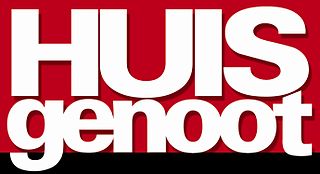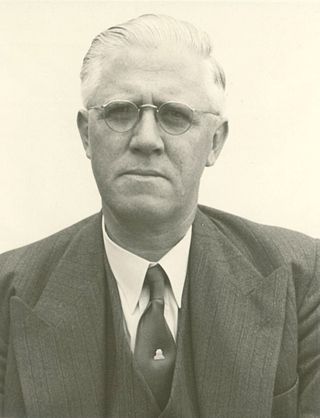History
The Windhoek publisher John Meinert decided in 1927 that an Afrikaans language paper was needed to complement the English language Windhoek Advertiser and the German language Allgemeine Zeitung. Ernst Schlengemann accepted the post of editor. The first edition was published on April 8, 1927, the second-Afrikaans-speaking daily after the short-lived Suidwes Nuus (1922-1923). Die Suidwes-Afrikaner was initially meant to be a voice for Afrikaners in SWA, where Dutch and English in 1920 had replaced German (the former colonial power's tongue) as the official language. The editor grew the paper into a major political factor and later ran as a candidate for the UNSWP for the 1929 legislative elections. Schlengemann ran for the Windhoek-Sentraal constituency, but lost in a landslide to the National Party of South West Africa candidate. In 1929, he represented South West Africa at the foundation of the Federasie van Afrikaanse Kultuurverenigings in Bloemfontein. On May 8, 1930, he died of pneumonia in Windhoek Central Hospital. He wrote the first Afrikaans poem written in SWA, "Die Namib-woestyn."
Die Suidwes-Afrikaner endured longer as an opposition UP mouthpiece than any Afrikaans-language UP paper in South Africa. The growth in popularity of Die Suidwester (the NP newspaper) so overwhelmed its competitor in readership that the UP paper stopped publishing in 1976. At the end of 1977, Die Republikein emerged under editor Jan Spies as a competitor to Die Suidwester, which won the battle on December 21, 1990, when Die Suidwester was forced to change from daily to twice-weekly and ultimately weekly publication.

The Herstigte Nasionale Party is a South African political party which was formed as a far-right splinter group of the now defunct National Party in 1969. The party name was commonly abbreviated as HNP, evoking the Herenigde Nasionale Party, although colloquially they were also known as the Herstigtes. The party is, unlike other splinter factions from the National Party, still active but politically irrelevant.

The United National South West Party was a political party in South West Africa, the local counterpart of the South African United Party but founded eight years earlier and merged into the latter in 1971. It was formed through a merger of National Party of South West Africa and the South West Party, in order to counter the influence of the German League in South West Africa. The first congress of UNSWP was held in Windhoek on 1–2 April 1927.
The South West Party was a political party in South West Africa, today Namibia. Initially the party was known as Union Party. The party was founded in Windhoek in September 1924 by F. van der Heever, A.P. Olivier, and Andries de Wet. It took the name SWP in 1926.

Huisgenoot is a weekly South African Afrikaans-language general-interest family magazine. It has the highest circulation figures of any South African magazine and is followed by sister magazine YOU, its English-language version. A third magazine, Drum, is directed at the black market. The magazines have a combined circulation of about 550 000 copies a week. Yvonne Beyers is the current editor of Huisgenoot.

Adolph Stephan Friedrich Jentsch was a German-born Namibian artist. He studied at the Dresden Staatsakademie für Bildende Künste for six years, and used a travel grant award to visit France, Italy, UK and the Netherlands. Jentsch moved to Namibia in 1938 to escape the approaching war and lived there until his death. He travelled extensively in Namibia and eventually settled down near Dordabis, about 60 km from the capital Windhoek. He is one of Namibia's most famous painters.

The Reverend Stephanus Jacobus du Toit was a controversial South African nationalist, theologian, journalist and failed politician. In his younger years Du Toit did much to promote the Afrikaans language as a symbol of Afrikaner nationalism. Apart from the years 1882-8 when he was Superintendent of Education in the South African Republic, he lived in or near the town of Paarl in the Cape Colony. Disillusionment with the Kruger regime led him, in later years, to moderate his views. He was instrumental in initiating the translation of the Bible into Afrikaans and was a proponent of the Afrikaans language. He died an outcast.
Die Burger is a daily Afrikaans-language newspaper, published by Naspers. By 2008, it had a circulation of 91,665 in the Western and Eastern Cape Provinces of South Africa. Along with Beeld and Volksblad, it is one of three broadsheet dailies in the Media24 stable.

Afrikaner nationalism is a nationalistic political ideology created by Afrikaners residing in Southern Africa during the Victorian era. The ideology was developed in response to the significant events in Afrikaner history such as the Great Trek, the First and Second Boer Wars and opposition to South Africa's entry into World War I.
Johannes du Plessis Scholtz was a South African philologist, art historian, and art collector.

Afrikaners are a Southern African ethnic group descended from predominantly Dutch settlers first arriving at the Cape of Good Hope in 1652. Until 1994, they dominated South Africa's politics as well as the country's commercial agricultural sector.

The National Party of South West Africa was a political party in South West Africa.

Andries Gerhardus Visser was a well-known early Afrikaans poet. He was popularly known as the "Singer of the Suikerbosrand".

Johannes Albertus Munnik Hertzog was a South African politician, Afrikaner nationalist, cabinet minister, and founding leader of the Herstigte Nasionale Party. He was the son of J. B. M. (Barry) Hertzog, a former Prime Minister of the Union of South Africa.
The Reformed Churches in Namibia is a confessional Reformed church in Namibia. Reformed people come from Angola to Namibia in 1929. The Dorslandtrekkers were mostly Reformed people who had settled in Angola but later moved to Namibia. The Dorslandtrekkers were originally from Transvaal, South Africa, and migrated northwestward starting in 1874 in two large and one smaller group, starting the Humpata Reformed Church under the Rev. Jan Lion Cachet. Later in 1930 3 congregations were established. More farmers came and the church grew. Missionary work was started in 1969 under the Bushmans of the Gobabis region, Botswana. It has 2,757 members and 14 congregations, and adheres to the Apostles Creed, Nicene Creed, Heidelberg Catechism, Belgic Confession and the Canons of Dort.There's no women ordination. Official languages are Afrikaans, Bushman, Gobabis-Kung.

Pierre de Villiers Pienaar (1904–1978) was a South African Afrikaans academic and Professor at University of the Witwatersrand (Wits) and later at University of Pretoria, who pioneered Speech Language Therapy in South Africa and specialising in Audiology and Lexicography as well as being an Afrikaans author. As Lexicographer in 1973, he was part of the group of authors that established the Afrikaans Explanatory Dictionary alongside Prof M.S.B. Kritzinger and Prof F.J. Labuschagne.
The Federasie van Afrikaanse Kultuurvereniginge is a non-profit, non-governmental Afrikaans cultural organisation. Founded in 1929, it celebrated its 85th year in 2014. Its offices are situated at the Voortrekker Monument in Pretoria.
Henry Allan Fagan, QC was the Chief Justice of South Africa from 1957 to 1959 and previously a Member of Parliament and the Minister of Native Affairs in J. B. M. Hertzog's government. Fagan had been an early supporter of the Afrikaans language movement and a noted Afrikaans playwright and novelist. Though he was a significant figure in the rise of Afrikaner nationalism and a long-term member of the Broederbond, he later became an important opponent of Hendrik Verwoerd's National Party and is best known for the report of the Fagan Commission, whose relatively liberal approach to racial integration amounted to the Smuts government's last, doomed stand against the policy of apartheid.

Die Transvaler was a South African newspaper founded in 1937 with the aim of promoting Afrikaner nationalism and supporting the Transvaal branch of the National Party. Hendrik Verwoerd was its first editor.
Anna Aletta Elizabeth (Annie) van der Merwe was a leader of the sisters of the Reformed Churches in South Africa (GKSA) in South West Africa (SWA).
The Keetmanshoop Reformed Church is a congregation of the Dutch Reformed Church in South Africa (NGK) in southern Namibia. It is the third oldest NGK congregation in the country after Mariental and Otjiwarongo. Up until the founding of the Keetmanshoop congregation, the entire area known then as South West Africa (SWA) was divided between the two mother churches.










